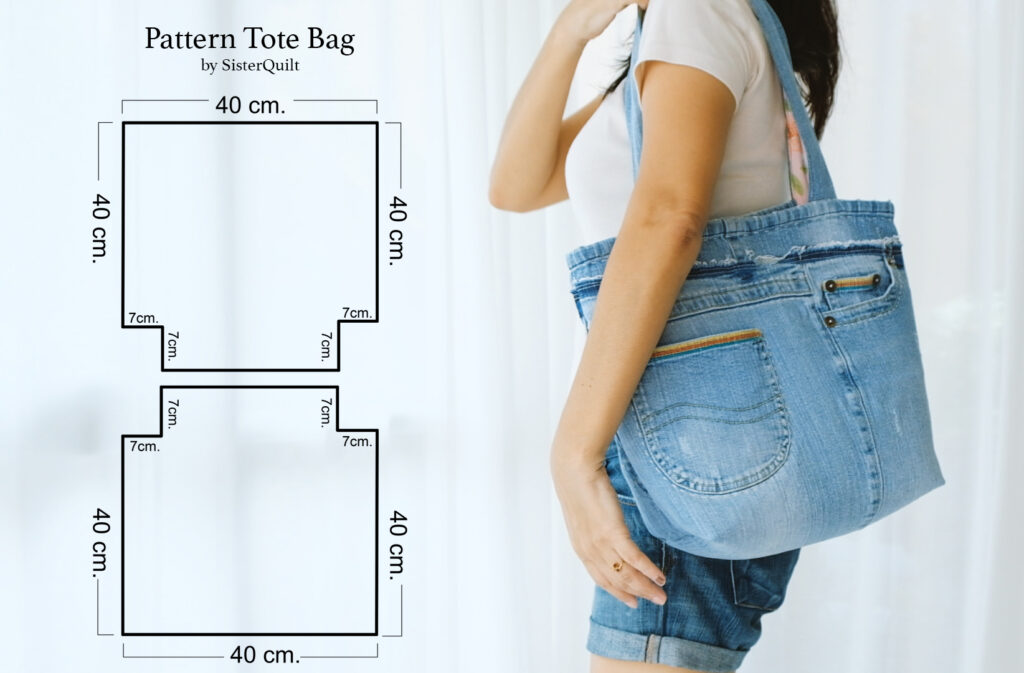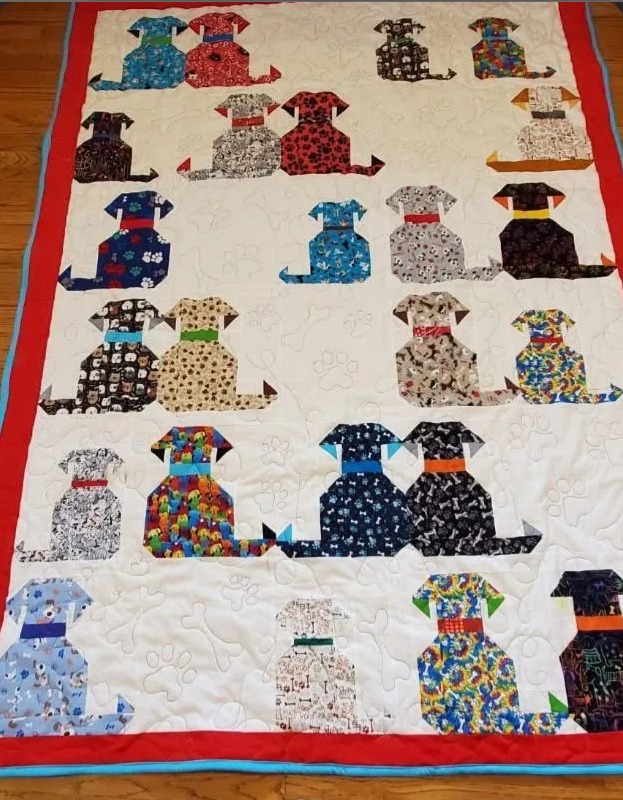The Log Cabin Quilt Pattern is one of the most beloved and timeless designs in the quilting world. Known for its beautiful geometric layout and symbolic meaning, this pattern has been cherished for generations. Whether you’re an experienced quilter or a beginner eager to learn, mastering this classic quilt design can be both fulfilling and creatively inspiring.
Originating in the 1800s, the Log Cabin Quilt Pattern has deep roots in American history. Each block in this pattern represents a “log cabin,” with strips of fabric (called “logs”) radiating from a central square that symbolizes the hearth or heart of the home.
Today, the Log Cabin Quilt Pattern remains a favorite not only for its aesthetic beauty but also for its emotional depth. It embodies warmth, family, and creativity, while offering countless opportunities for experimentation with color, fabric, and layout.

The History and Symbolism of the Log Cabin Quilt Pattern
The Log Cabin Quilt Pattern has a fascinating story that mirrors the evolution of quilting itself. Historically, quilts served not just as practical bed coverings but also as storytelling canvases, preserving cultural and emotional narratives through fabric.
The earliest versions of this quilt design appeared in the mid-19th century, around the time of the American Civil War. The central square—often made of red or yellow fabric—symbolized the hearth or fire of the home, while the surrounding logs represented the protective walls. This symbolic meaning connected deeply with settlers and pioneers, reflecting their hope, warmth, and resilience during challenging times.
Interestingly, variations of the Log Cabin Quilt Pattern have also been found in ancient Egyptian textiles, suggesting that the idea of building beauty from simple geometric layers transcends cultures and centuries. This timeless concept continues to inspire today’s quilters who see it as a bridge between tradition and innovation.
As the Industrial Revolution introduced new fabrics and dyes, quilters began experimenting with bold colors and patterns, breathing new life into this design. The simplicity of its construction made it accessible, while the infinite combinations of color placement gave every quilt a unique personality.
The Log Cabin Quilt Pattern also gained political and social significance. During the Civil War, certain arrangements of light and dark fabrics were rumored to carry coded messages, guiding escaping enslaved people along the Underground Railroad. Whether fact or folklore, this association highlights the powerful symbolism behind every stitch.
Even now, each modern Log Cabin Quilt Pattern carries a whisper of this history—a reminder that quilting is not just a craft but a living tradition passed from hand to hand, generation to generation.
Understanding the Structure of a Log Cabin Quilt Block
At the heart of every Log Cabin Quilt Pattern lies its iconic block structure. A single block begins with a central square—often representing the heart of the home—surrounded by a series of fabric strips that radiate outward in a spiral or rectangular pattern.
The beauty of this block lies in its mathematical precision. Each strip must be measured and sewn carefully to maintain symmetry and balance. Despite its simplicity, the design allows for a surprising level of creativity in how colors and fabrics are arranged.
Typically, the block is divided into two halves—one light and one dark. This contrast creates visual depth and movement across the quilt, giving it a distinctive, almost architectural appearance. The interplay of light and dark fabrics adds texture and energy, guiding the viewer’s eye across the finished piece.
You can create countless variations by experimenting with the block’s orientation. Traditional layouts include “Barn Raising,” “Straight Furrows,” and “Courthouse Steps,” each resulting in a completely different visual effect.
When assembling multiple blocks, precision is key. Aligning seams perfectly ensures a clean, professional finish. Beginners may find chain piecing—a method of sewing multiple blocks in a continuous line—an efficient technique that saves time and thread.
Once the blocks are complete, they are sewn together to form the quilt top, layered with batting and backing, and then quilted by hand or machine. The result is a stunning, textured piece that reflects both tradition and individuality.
Creative Variations and Modern Interpretations
The Log Cabin Quilt Pattern has evolved far beyond its humble origins. Today’s quilters embrace the pattern’s versatility, blending it with modern fabrics, color schemes, and techniques to create contemporary works of textile art.
One popular variation is the Modern Log Cabin Quilt, which often features bold, asymmetrical designs and negative space. Instead of traditional color contrast, modern quilters may use monochromatic tones or vibrant rainbow palettes to achieve dramatic effects.
Another favorite is the Scrappy Log Cabin Quilt, a sustainable option that uses leftover fabric scraps. This variation celebrates imperfection and spontaneity, turning even the smallest fabric pieces into a cohesive, eye-catching design.
For quilters who love symmetry, the Courthouse Steps Pattern offers a structured and rhythmic alternative. In this variation, strips are added evenly on opposite sides of the center square, producing a tidy, stair-step effect that feels both classic and refined.
The Pineapple Log Cabin adds an intricate twist, where triangular strips replace rectangular ones, creating a dazzling starburst pattern. Though more advanced, it rewards quilters with a stunning geometric masterpiece.
Even digital tools and quilting software have brought new life to the Log Cabin Quilt Pattern, allowing designers to visualize layouts and experiment with color palettes before sewing a single stitch. Whether hand-stitched or machine-quilted, the possibilities are endless for those willing to explore.
How to Make Your Own Log Cabin Quilt Pattern
Creating your own Log Cabin Quilt Pattern may seem daunting at first, but with a bit of patience and planning, it can become one of the most rewarding projects you’ll ever complete.
Start by choosing your fabrics. Decide on a color scheme that includes both light and dark tones. The contrast between these fabrics is what brings the pattern to life, emphasizing the unique geometry of each block. Cotton fabrics are ideal for beginners because they are easy to cut, sew, and press.
Next, prepare your cutting tools—rotary cutter, mat, and ruler—and measure each strip accurately. Precision is essential for ensuring all the blocks fit together perfectly. Each “log” should be straight and even, maintaining a consistent seam allowance.
Begin sewing from the center square, adding one strip at a time in a clockwise or counterclockwise direction. Press each seam flat before attaching the next strip to keep the block smooth and tidy.
Once you’ve finished enough blocks for your desired quilt size, lay them out on a flat surface to experiment with different arrangements. You might prefer a traditional “Barn Raising” layout or a modern “Diagonal Furrow” design.
FAQ About Log Cabin Quilt Pattern
1. What does the Log Cabin Quilt Pattern symbolize?
The central square traditionally represents the hearth or heart of the home, while the surrounding strips symbolize the logs of a cabin, offering warmth and protection.
2. Is the Log Cabin Quilt Pattern suitable for beginners?
Yes! The pattern’s simple construction makes it perfect for beginners, while still offering enough complexity to keep experienced quilters inspired.
3. How many fabrics do I need for a Log Cabin Quilt?
You can use as few as two contrasting fabrics or an entire collection of scraps. The key is maintaining contrast between light and dark tones.
4. What is the best fabric for this quilt?
100% cotton is ideal because it’s durable, easy to sew, and handles repeated washing well. Beginners especially benefit from its stability and texture.
5. Can I make a modern version of the Log Cabin Quilt?
Absolutely! Modern quilters often experiment with bold colors, minimalism, and asymmetrical layouts to give this traditional pattern a fresh, updated look.
6. How do I decide on the layout for my blocks?
Try experimenting with digital quilt design tools or arranging your blocks on the floor before sewing. Classic layouts include Barn Raising, Straight Furrows, and Fields and Furrows.
Conclusion
The Log Cabin Quilt Pattern continues to capture the hearts of quilters around the world. Its blend of simplicity, history, and infinite creative potential makes it a timeless favorite. From its humble origins to its modern interpretations, this pattern reflects warmth, craftsmanship, and the enduring spirit of creativity.



